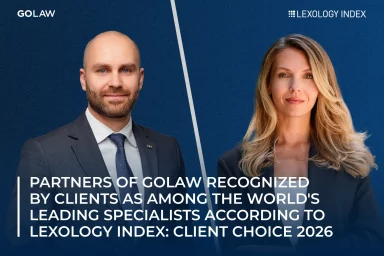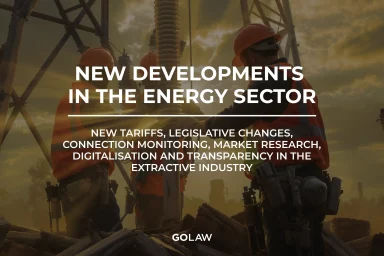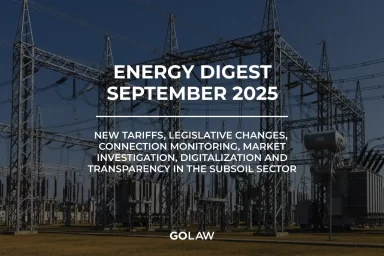CO2 emissions trading — a new way to finance energy renewal in Ukraine
Today, businesses must operate on the principles of sustainability and social responsibility. The UN has identified 17 Sustainable Development Goals, which are the guidelines for business today, including ESG goals (environment, social responsibility, governance).
ESG is a management principle that allows companies to participate in solving environmental, social and governance problems. An important part of this is the rational use of natural resources and waste minimization. Reducing greenhouse gases, which are one of the main causes of global warming, has become a priority for businesses.
On February 12, 2024, Reuters reported that the value of global CO2 emissions trading markets reached $948 billion in 2023, up 2% year-on-year. These markets help reduce global warming and support ESG goals.
To stimulate investment in low-carbon technologies, countries have launched emissions trading systems (ETS). The European Carbon Market (EU ETS) is the largest, with a value of about €770 billion in 2023. The price of carbon emission permits in the EU ETS reached a record high in February 2023, exceeding EUR 100 per ton, but fell at the end of the year due to weak demand from industrial buyers and the energy sector.
The market volume in the UK decreased by 22% to €364 billion, and prices averaged around €65 per tonne, down 34% from 2022. In North America, prices reached record highs, with matching markets worth 714 billion euros. The Chinese market was valued at €23 billion.
Investopedia cites Morgan Stanley’s annual report for 2023 as providing a similar assessment of the outlook: despite the widely publicized problems, the carbon trading market is expected to grow to $100 billion in 2030. The Boston Consulting Group estimates the market at $10-40 billion, but also expects rapid growth in demand. More companies are setting net zero emissions targets and buying more offsets to meet them. Improved monitoring and reporting practices will give buyers confidence that their money is being used for the right purpose.
Investment giant BlackRock sees the global transition to low-carbon energy sources as one of the most powerful drivers of opportunity and risk in the capital market, even as this transition becomes more controversial in the United States. In the company’s annual letter to investors, Chairman and CEO Larry Fink focused on the role of capital markets in addressing the economic challenges of the mid-21st century, including building the infrastructure to digitize and decarbonize the economy.
Renewable electricity producers in the EU welcome the support of investors and the forecasts of CO2 trading markets. Guaranteeing the origin of electricity confirms its environmental friendliness. EU Directive 2019/944 requires full disclosure of energy sources. RED II aims to increase the use of renewable energy sources and reduce emissions.
The introduction of an ETS (emissions control mechanism at the border with the EU) will help reduce pollution. Ukrainian steel exporters may incur additional costs of 300-900 million euros per year after the introduction of the CBA. The impact of the ETS on iron and steel will be significant, but will not change the competitive position of Ukrainian producers compared to Russian or Chinese producers, although it will worsen it relative to European and Turkish producers.
To remain competitive in the EU market, Ukrainian ferrous metallurgy will need a complete technological overhaul, including the development of carbon-free electricity from renewable sources and carbon-free gases such as hydrogen.
Ukraine needs to develop its own market of guarantees of origin for green electricity exports. It is important to ensure the free circulation of guarantees of origin in accordance with European standards. Guarantees of origin will be generated electronically based on certified data.
CO2 emissions trading can also become an important tool for financing the restoration of energy equipment damaged by Russian troops. This will raise additional funds for the rebuilding of critical infrastructure, which will ensure the country’s sustainability and energy independence.
Thus, the situation is not so simple for Ukraine: there is a big global trend and some grant support from powerful economies, some of which can come to Ukraine, and this will make it easier to bring financial capital and specific investors into industrial projects. But at the same time, the domestic market of the United States or the EU, which also receives this support, is more stable and attractive for investment in many ways. To raise Ukraine’s profile and keep it on the crest of this wave, it is necessary to both accelerate work on guarantees of origin for work with the EU and create a competitive product by attracting not only cash investments but also technology.
To conclude the review, we cannot but mention another related market where CO2 emissions are also traded. These are sequentially linked technologies for CO2 capture, sequestration, and long-term storage. This market uses sophisticated technologies and now actually consists of startups and pilot projects. This market has many optimists, but there are also more pessimistic views about it, both in terms of financial prospects and environmental impact.
Reducing emissions is cheaper than removing CO2 from the air. There are a number of prices for different technologies in the carbon sequestration industry, but it is difficult to say which ones work as promised and whether the additional costs of more controlled methods are worth it.
“There are fundamental questions about carbon removal that society has to answer,” said Eric Thun, chief technology officer of Breakthrough Energy, “Does society want to pay $500 a ton to be absolutely sure that I’ve captured the carbon and know exactly where it is? Or does it want to pay 10 cents per ton and hope for the best?”
The vast majority of carbon sold today is at the lower end of the scale, and buyers are primarily paying to avoid emissions by reducing deforestation or deploying clean energy, not to remove CO2. Bloomberg Green investigations have uncovered a number of fraudulent projects.
These tons of carbon are mostly bought and sold on a voluntary market where the consequences of an accounting error are not very large. This encourages companies to look for the cheapest price per ton rather than the most permanent or verified sequestration, which is often the most expensive.
“The problem is that a voluntary carbon market is voluntary,” Marty Odlin, founder of Running Tide, wrote in a LinkedIn post announcing its closure. “There simply isn’t the demand needed to support large-scale carbon removal,” said Marty Odlin.
“The world needs about 5 billion tons of carbon sequestration per year by 2050 as part of a net-zero strategy,” said Nan Ransohoff, head of climate at payment company Stripe Inc. and chairman of the Frontier Foundation, which aims to accelerate the development of carbon removal technologies. “If you roll this number back, by 2030 the world will need 50 to 100 million tons annually. This is a $20 billion market at a price of 200 dollars per ton.” But now that there are hundreds of startups, Ransohoff says the market is likely to face a new problem: too much supply and not enough buyers. Some founders and investors argue that this oversupply is not a glitch in the system, but the way the industry was built by design: “Throw everything against the wall and see what sticks.”
Thus, reducing CO2 emissions in the coming decades will focus on improving industrial technologies in the real economy to reduce CO2 emissions (energy, metallurgy, agriculture) and various incentives for producers of green products, mainly for the first stages of raw material processing.
❗️ If you need legal advice, please fill out the form below to request it.

Dr. Valentyn Gvozdiy
Managing Partner, Attorney at law, PhD
- Contacts
- 31/33 Kniaziv Ostrozkykh St, Zorianyi Business Center, Kyiv, Ukraine, 01010
- v.gvozdiy@golaw.ua
- +38 044 581 1220
- Recognitions
- Lexology Index: Corporate Tax 2025
- ITR World Tax 2025
- Lexology Index: Client Choice 2025
- The Legal 500 EMEA 2025
- 50 Leading Law Firms Ukraine 2026
Get in touch
To get a consultation, please fill out the form below or call us right away:Sign up to be aware
New achievements are inspired by information. GO further, don’t miss out GOLAW news and legal alerts
Our expertise
- Energy and Natural Resources
- Antitrust and Competition
- Banking and Finance
- Compliance, Corporate Governance and Risk Management
- Corporate and M&A
- Criminal and White Collar Defence
- Defense in Anti-corruption procedures and regulations
- Labor and Employment
- Natural Resources and Environment
- Government Relations (GR)
- Insolvency and Corporate Recovery
- Intellectual property
- International trade
- Legal support of business and private Сlients in Germany
- Litigation and dispute resolution
- Private clients
- Real Estate and Construction
- Restructuring, Claims and Recoveries
- Martial Law
- Tax and Customs
- Agribusiness
- Aviation
- Chemical industry
- Engineering, Construction and Building Materials
- Environment and Natural Resources
- Financial institutions
- IT and AI
- Industry and manufacturing
- Healthcare industries, Life sciences and Pharmaceuticals
- Media, Entertainment, Sports and Gambling
- Retail, FMCG and E-Commerce
- Transport and Logistics
We use cookies to improve performance of our website and your user experience.
Cookies policy
Cookies settings







